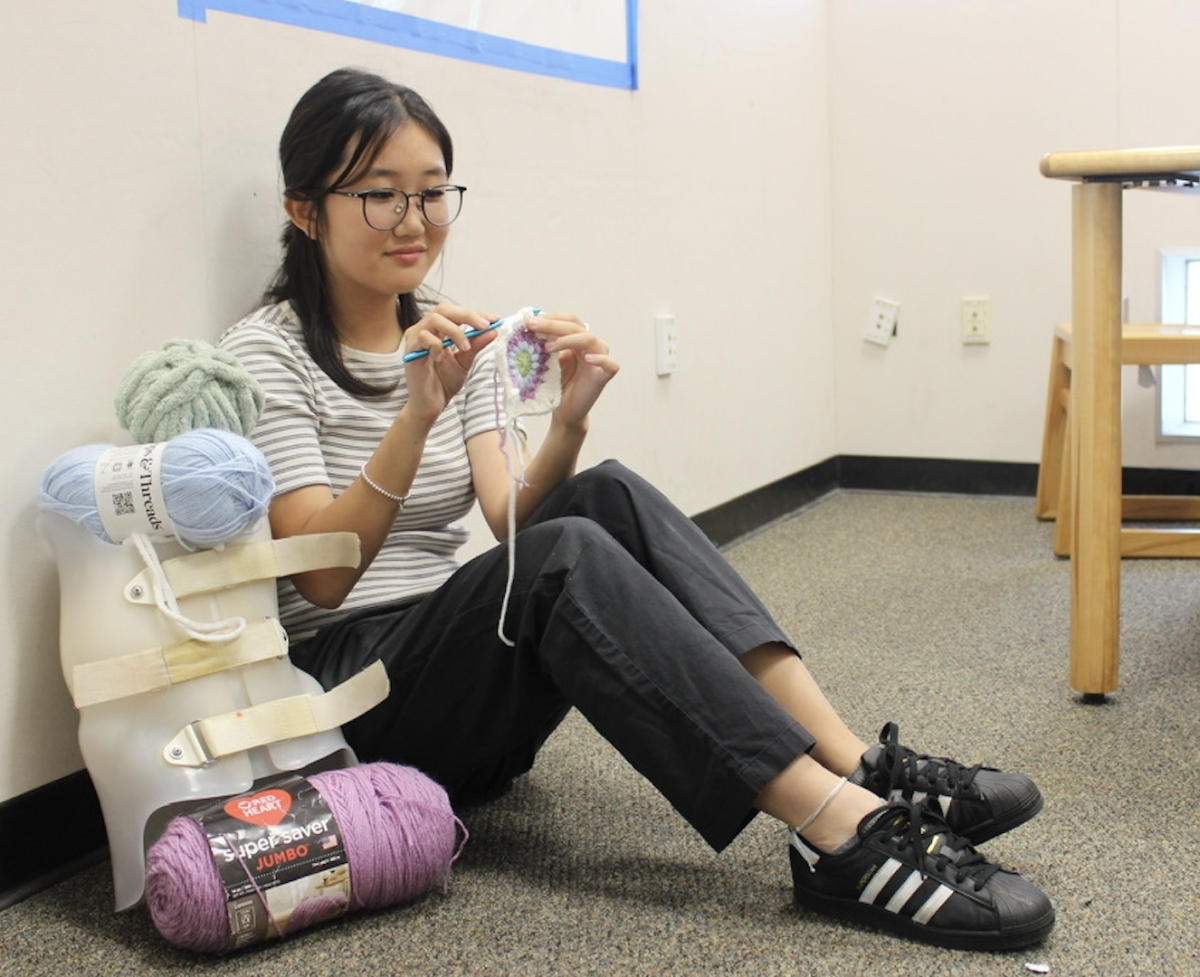As the sun beat down on her face and the sound of cheering and cowbells rang through the air, Shayna Mehta (11), co-captain of the varsity girls cross country team, was prepared to do her best in her 3-mile race, Sept. 16, at Morley Field. This is the same course as the upcoming CIF championships.
She looked around at the determined faces of the other athletes and was reminded of the hundreds of hours she spent preparing for that moment. Her one goal in mind was to push herself to do the best she could.
In cross country, starting a race strong can shape a runner’s mindset and competitiveness for the rest of the run. Starting off the race, Mehta tries to get towards the front middle of the pack so she won’t get stuck.
“If you don’t have a good spot, you can get boxed in,” Mehta said. “That just means there are people all around you, and you have no way to get out and in front.”
To stay closer to the front, Mehta begins the race by sprinting as fast as she can and trying to pass people. One technique runners use to get in front of the pack and maintain their position is simply breathing properly. Irene Penev (12), co-captain of the cross country team, said she concentrates on breathing through her nose.
“One strategy for racing is [to not] start mouth breathing and breathing heavily at the beginning of the race because it takes a lot of energy and makes you more stressed,” she said.
Running out of oxygen means there is no way they can continue to advance past other runners.
After the initial crowd of runners clears out, Mehta finds a group of three or four girls to act as her pacers.
“If they’re just a little bit ahead of you, the goal is to catch up to them and stick with them,” Mehta said. “You just have to push yourself to stay with them and mentally it’s easier to stay with the group than get yourself to catch up with another group.”
Sticking close to other runners has helped Mehta and Penev keep going. If runners get stuck in ‘no man’s land,’ a place where no other runners are around them, it causes them to lose their motivation.
“You really have to push yourself immensely to keep going fast and to make sure you don’t fall off your pace,” Penev said. “[Running is] difficult without any external coaching and cheering around you.”
After the initial flat part of the Morley Field course, runners encounter a big uphill marking one mile. To take advantage of this, Mehta changed her stride and moved her arms in different ways.
“When you’re on hills, you want tinier steps and you want to push your arms to give you more power and propulsion,” Mehta said.
After she reaches the top of the hill, there is an opportunity to pass people on the downward slope.
“[On downhills], you get to use gravity to your advantage [and] extend your stride,” Penev says.
In cases like these, mentality is important to keep up your pace.
“In every race, you’re basically fighting against yourself and trying to do better,” Mehta said. “Especially when you’re struggling, it just comes down to your determination and motivation.”
To push themselves, runners often try to distract themselves from the pains of running.
“Sometimes when I was a freshman, I’d literally just list off chem ions or sing a song,” Mehta said.
Despite the difficulty of running long distances, Mehta still loves the sport.
“The pain that you feel during the workout and during the run is so bad,” Mehta said, “But the feeling of accomplishment and relief is unlike anything else I’ve ever felt in my life.”









